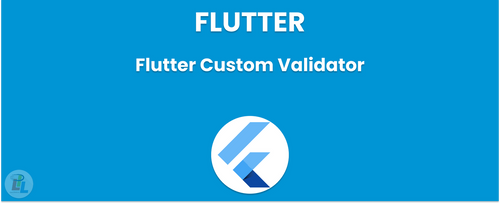Flutter, the versatile and dynamic framework for building natively compiled applications, empowers developers to create captivating and interactive mobile apps. In the realm of mobile app development, validating user inputs is a common and critical task. Among these inputs, email addresses hold a special place, as they are integral to user communication and authentication. In this comprehensive guide, we will explore email validation in Flutter, from the basics to advanced techniques, equipping you with the expertise to handle user input like a pro.
Why Email Validation in Flutter Matters
Before we dive into the specifics of email validation in Flutter, let's understand why it's essential.
1. Data Accuracy: Validating user-entered email addresses ensures that your app collects clean and accurate data. This, in turn, enhances the quality of your user database.
2. User Experience: Proper validation prevents users from accidentally entering incorrect email addresses, saving them from frustrating experiences and potential login issues.
3. Security: Email addresses are often used for account recovery and communication. Validating them helps protect user accounts from unauthorized access and phishing attacks.
4. Compliance: Many data protection regulations, such as GDPR, mandate accurate user data collection, making email validation a legal requirement in some cases.
Given these reasons, email validation in Flutter is not just a best practice—it's a necessity for any app that relies on user email addresses.
Basic Email Validation in Flutter
Let's start with the basics of email validation in Flutter.
1. Using RegExp (Regular Expressions): Flutter provides a robust regular expression library that you can use to define and apply patterns for email validation. Here's a simple example:
bool isEmailValid(String email) {
final emailRegExp = RegExp(r'^[\w-]+(\.[\w-]+)*@([\w-]+\.)+[a-zA-Z]{2,7}$');
return emailRegExp.hasMatch(email);
}
This code defines a regular expression pattern for a typical email address format and checks if the input matches that pattern.
2. Flutter Form Widgets: Flutter's form widgets, such as TextFormField, allow you to specify a validator function. You can use this function to perform email validation as a user enters data into a form field. For example:
TextFormField(
validator: (value) {
if (!isEmailValid(value)) {
return 'Please enter a valid email address';
}
return null;
},
)
This code snippet demonstrates how to integrate email validation into a Flutter form.
Advanced Email Validation Techniques
While basic validation covers most scenarios, you may encounter situations where you need more advanced email validation in your Flutter app. Here are some techniques to consider:
1. Third-Party Libraries: Flutter has a rich ecosystem of packages. The email_validator package, for example, simplifies email validation by providing a pre-built EmailValidator class. You can use it to validate email addresses easily:
import 'package:email_validator/email_validator.dart';
bool isValid = EmailValidator.validate(email);
2. Real-Time Validation: To provide instant feedback to users, implement real-time email validation as they type. Update the validation status dynamically, indicating whether the entered email address is valid or not.
3. Custom Validation Rules: Depending on your app's specific requirements, you may need to define custom email validation rules, such as domain whitelists or blacklists.
4. Server-Side Validation: While client-side validation is important, always complement it with server-side validation to ensure the integrity of data submitted to your backend.
Best Practices for Email Validation in Flutter
To excel in email validation for your Flutter apps, consider these best practices:
1. Combine Client and Server-Side Validation: Client-side validation provides a smooth user experience, but always validate email addresses on the server to prevent malicious or incorrect data from reaching your backend.
2. Provide Clear Feedback: When email validation fails, display user-friendly error messages to guide users in correcting their input.
3. Regularly Update Validation Logic: Stay up-to-date with email address standards and update your validation logic as needed.
4. Test Extensively: Implement unit tests for your email validation functions to catch and fix issues early in the development process.
5. Handle Special Cases: Consider how your app handles email addresses with international characters or non-standard formats.
Commonly Asked Questions
Q1: Can I use the same email validation logic for both Android and iOS in Flutter?
Yes, Flutter allows you to write platform-independent code, so the same email validation logic can be used on both Android and iOS.
Q2: How do I prevent bots from submitting invalid email addresses?
Implementing CAPTCHA or reCAPTCHA can help prevent automated bots from submitting invalid email addresses.
Q3: What is the best approach for real-time email validation in Flutter?
To achieve real-time validation, use the onChanged event of a TextFormField to continuously validate the entered email address and provide instant feedback to the user.
Q4: Are there Flutter packages for more advanced email validation, such as disposable email detection?
While there aren't many specialized packages for this purpose, you can extend your validation logic to include checks for disposable email domains.
In conclusion, mastering email validation in Flutter is an essential skill for any mobile app developer. By understanding the significance of email validation, learning the basic and advanced techniques, and following best practices, you can ensure that your Flutter app collects clean and accurate email addresses, providing users with a secure and frustration-free experience.



